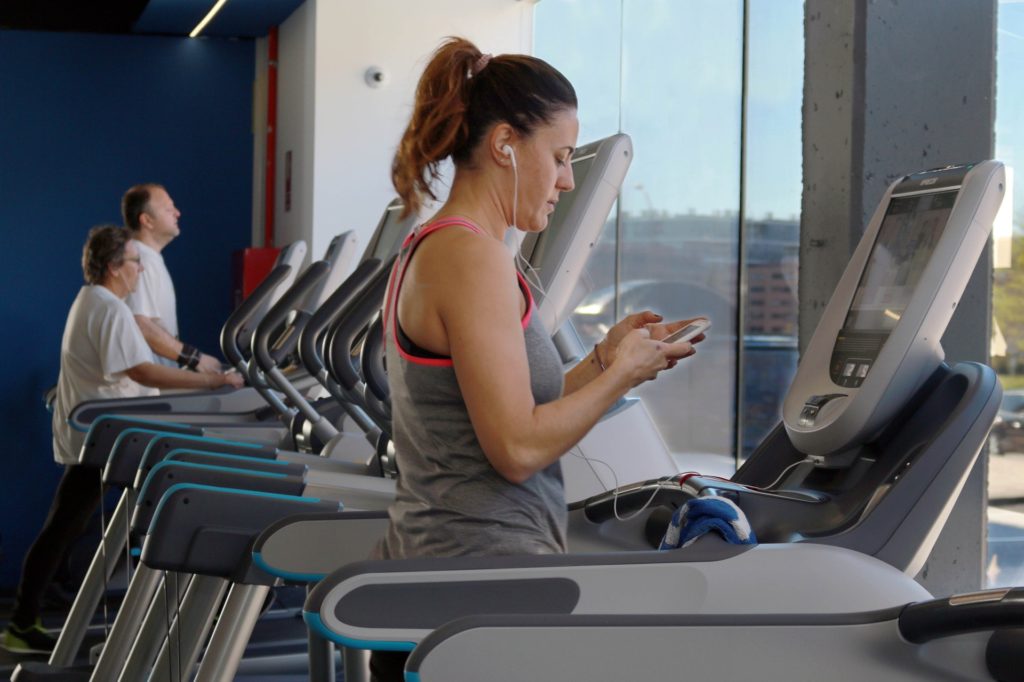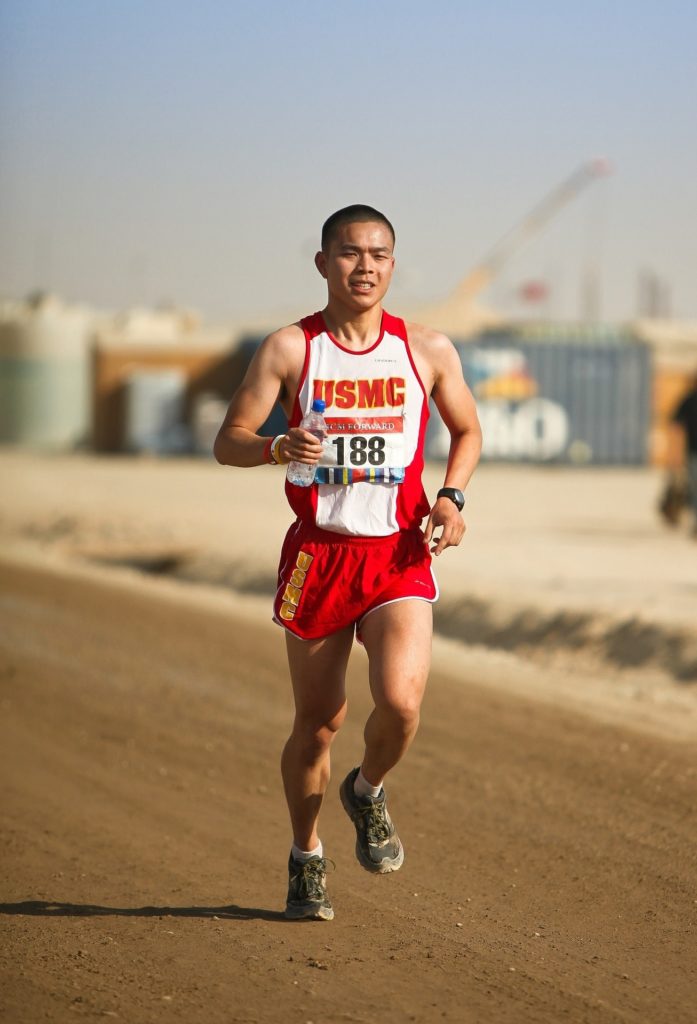
Speak to any personal trainer, gym-goer or office worker and they’ll have heard about fasted cardio.
The big question is, does it really work?
In today’s post let’s take a closer look at why fasted cardio could be an excellent weapon against your fat stores.
Plus, read to the end for an example schedule of how to start your day in the perfect fat burning way.
First, let’s be clear on what fasted cardio is…
Fasted cardio is exercising by doing an aerobic activity (running, walking, cycling, etc) on an empty stomach.
For most, this means before breakfast because they have been 8 or more hours without food. It doesn’t mean any water, so make sure you top on that if you plan on doing any.
The key is to do it while there is little to no food readily available in the bloodstream for the body to use as fuel so it has to turn to fat stores for energy.
A quick coffee stop detour…
Another hack people like to use is drinking coffee before exercise. This is fine to do before fasted cardio, especially if it’s just a black coffee rather than a calorie filled alternative. Which personality type of coffee drinker are you…?
In this study, it was shown that caffeine contained in coffee helped to raise the metabolism significantly. And it also helped burn fatter, but this was more significant in normal weight people rather than those who were obese.
Takeaway Tip: drink black caffeinated coffee for extra fat burning.
Now let’s take a look at what the science says about fasted cardio…
Truth be told, the science surrounding how effective fasted cardio can be is mixed in opinion. This study, for example, shows no reported difference between doing cardio when fasted vs not fasted.
Today, though, I’d like to go deeper than the science…Yes, science is great but we do not live in a science lab day-to-day so it’s an artificial environment.

Back to the real world…
Importantly, there are other factors which make fasted cardio a great way to lose weight and exercise regularly for 3 very important reasons:
- Lower intensity training is easier
- Less time for eating
- Exercise releases feel-good hormones
Let’s look at each reason in a little more detail.
#1 Lower Intensity Exercise is Easier
With High-Intensity Interval Training (HIIT) being so popular at the moment it’s hard to find classes which are not HIIT. These classes, as the name implies, are very high intensity which means they are hard to complete.
And let’s be honest, the prospect of having to wake up at 6 am to work your socks off for 45 minutes might make you hit the snooze button one more time and not turn up at all. Hardly the result we are looking for.
In contrast, the thought of a gentle jog, bike ride or brisk walk where you can listen to a podcast or music is most likely much more achievable for most people.
As a result, sticking to this type of exercise is much more likely. And that’s the key with any exercise regimen; consistency.
And you know what the most effective type of exercise is, don’t you? It’s the one you do week in, week out. Even if fasted cardio is not scientifically superior to non-fasted, actually getting out to do the exercise in the first place is definitely far superior to not doing anything.
Getting into those regular habits is important. And forming habits is easier when the task doesn’t seem too daunting. So this is a win in favour of fasted cardio in my opinion.

Fasted cardio is easier to do because it has to be done at a lower intensity and you can easily add it into your daily routine. If you can make it part of your commute to work then it will just be what you do each day.
Also, imagine having to do an intense training session right after eating breakfast? It could cause a few problems with your digestion, so doing cardio beforehand makes life simpler and you have a nice breakfast to look forward to after you’ve finished. #winning
#2 Less Time for Eating
By getting up and active before you eat, it makes the time you have to eat less. That 1-2 hour reduction in your eating window for the day may help you eat fewer calories overall.
If you’re consciously trying to reduce the amount of food you eat, you’ll find it’s easier reduce the calories consumed in a 14-hour window rather than a 16 hour one.
Of course, what you eat in that window is critically important too but you are giving yourself a little extra helping hand.
This might not be true for everyone, but often after exercising a lot of people don’t feel like eating too heavily. This can assist you with reducing the volume of food you eat and therefore also help to reduce the number of calories you consume.
Non-scientific win number 2 for fasted cardio…
#3 Exercise Releases Feel Good Hormones
By exercising regularly, we release feel-good hormones which boost mood and help us feel energised.
This can really help us to stay on track with healthier eating habits and our gym workouts.
By doing less intense exercise more regularly, meaning fasted cardio 3-4 days a week, this can only help to improve our likelihood of feeling motivated to achieve our goals.
Just as in the same way a lack of exercise can lead to poor eating habits and a continual downward spiral in terms of health and fitness, so too can more regular exercise cause an upward spiral effect.
We train more so we want to eat more healthily, which means we have more energy and want to exercise more. We see improved results in fat loss and muscle gain, which boosts morale and helps us remain consistent with our regime.
Now we’ve looked at 3, non-scientific reasons why fasted cardio is effective, let’s turn our attention to how you do fasted cardio in the most effective way.
The Most Effective Way to do Fasted Cardio
Remember, the aim of fasted cardio is to burn fat. We want to exercise at an intensity which gives the body time to burn fat and not carbohydrates.
Carbs are the easiest to use a form of energy for the body, so if you are doing HIIT workouts your body will automatically use those first because it needs energy fast.

Ideally, the body would prefer to use fat because we have plenty of fat stores in the body. Carbs are rare, with only around 1 hour’s worth of energy being stored in the muscles.
Fat, on the other hand, could provide us with energy for many days or weeks if we needed it to.
So, the best way to do fasted cardio is at a low intensity. That means around 65% of your maximum heart rate. If you’re not sure what that is, you can do a basic calculation like this:
220 – your age = maximum heart rate (MHR)
65% of MHR = fasted cardio target heart rate
For example, if you are 30 years old:
220 – 30 = 190
190 *0.65 = 124 beats per minute
If you have a heart rate monitor on your watch you can track it to make sure you’re not going too hard. It’s actually pretty easy to get your heart rate up to that level.
Now we know what we’re aiming for, let’s look at some exercises you can use.
The Best Exercises for Fasted Cardio
As mentioned previously, HIIT is NOT a good way to do fasted cardio because it’s too intensive. Ideally, a steady pace exercise is better. Cycling, jogging or brisk walking are perfect.
If you’re in the gym, any of the cardio machines are good to use, such as the elliptical trainer, stationary bike or treadmill.
The best of all would be a 30-minute slow jog or the brisk walk in the park. It will help clear your mind, prepare you for the day ahead and get the fat burning process fired up.
Here is what an ideal start to your morning could look like:
6:30 am – get up, 1 x black coffee, 300ml water
7:30 am – 30-minute brisk walk to work (3-4km)
8:15 am – breakfast. 500ml of water
10:00 am – a handful of raw nuts. 500ml water
Aim for 2-3 litres of water per day and minimally processed foods to keep the metabolism fired up and working hard throughout the day.
In Summary
Hopefully, this post has helped you see why fasted cardio is not all about the science. There are 3 key other reasons why fasted cardio can be an excellent way of achieving your weight loss goals.
If you’re unsure of where to start or what to do, get in touch with a personal trainer near you. If you’re in London, Rob Jackson from Minimal FiT comes highly recommended.
